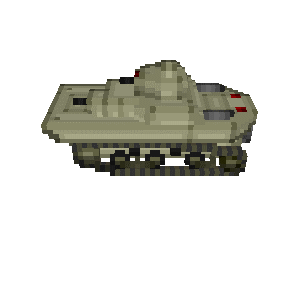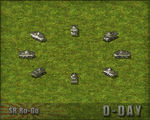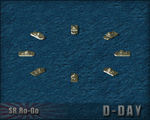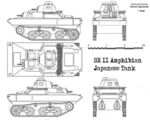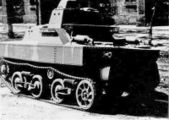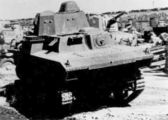Difference between revisions of "SR Ro-Go"
From D-day: wiki
| Line 25: | Line 25: | ||
*[http://www.weaponsofwwii.com/forum/viewtopic.php?f=10&t=3130&start=30 Weapons of WWII] | *[http://www.weaponsofwwii.com/forum/viewtopic.php?f=10&t=3130&start=30 Weapons of WWII] | ||
*[http://ww2photo.se/tanks/jap/amphib/sr-2.htm WWII Photos] | *[http://ww2photo.se/tanks/jap/amphib/sr-2.htm WWII Photos] | ||
| + | |||
| + | }} | ||
| + | |||
| + | |||
| + | {{Timeframe | ||
| + | |||
| + | |prewar=yes | ||
| + | |totalwar=yes | ||
| + | |||
| + | |prebc=yes | ||
| + | |earlybc=yes | ||
| + | |midbc=yes | ||
| + | |latebc=yes | ||
| + | |postbc=yes | ||
| + | |totalbc=yes | ||
}} | }} | ||
Revision as of 13:01, 12 August 2014
| ||||||||||||||||||||||||||||||||
History
Following the failure of the SR I-Go work quickly moved onto a completely new design. It was a smaller more compact vehicle using a new Horstmann type suspension system, a boat shaped bow was used to increase acceleration and two propellers with rudders were used greatly increasing performance in water. A small amount were built in 1935 and sent to China, one of them was later captured in Manchuria by Soviet troops.
References
. . . .
Time Frames
| 1930 - 1940: Pre-War |
1940 - 1942: Early-War |
1942 - 1944: Mid-War |
1944 - 1945: Late-War |
1945 - 1960: Post-War |
1930 - 1960: Total-War |
|
| Buildable | Yes | Yes | ||||
| Bonus Crate | Yes | Yes | Yes | Yes | Yes | Yes |
. . . .
